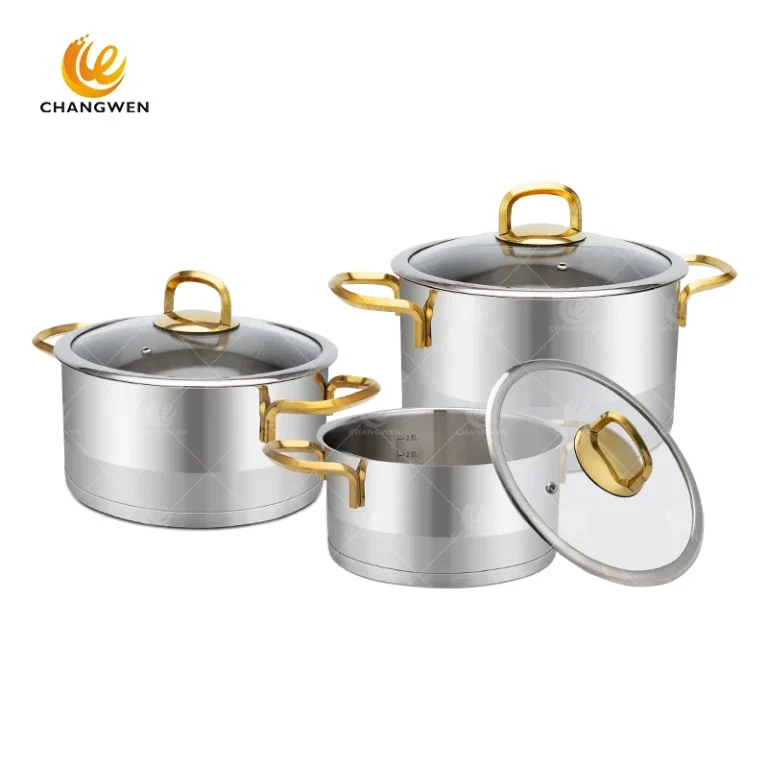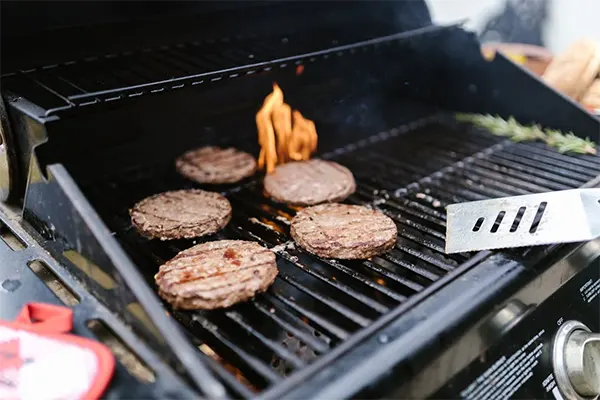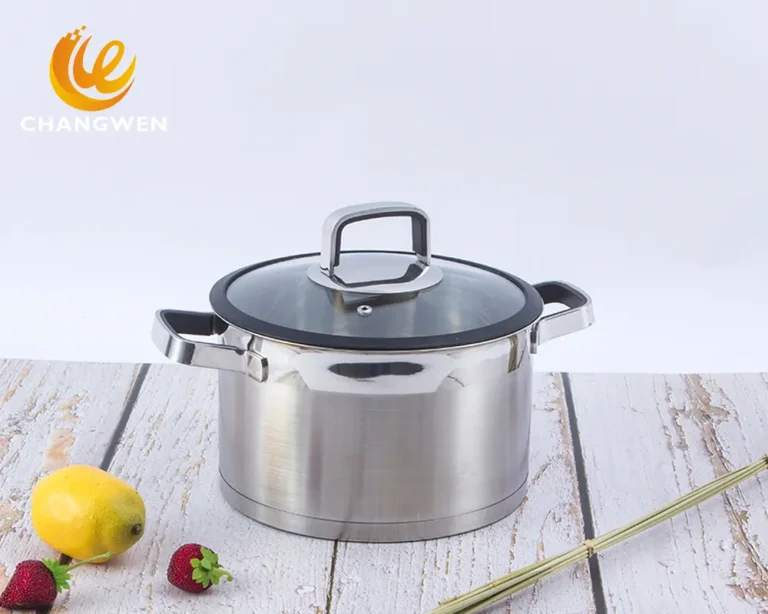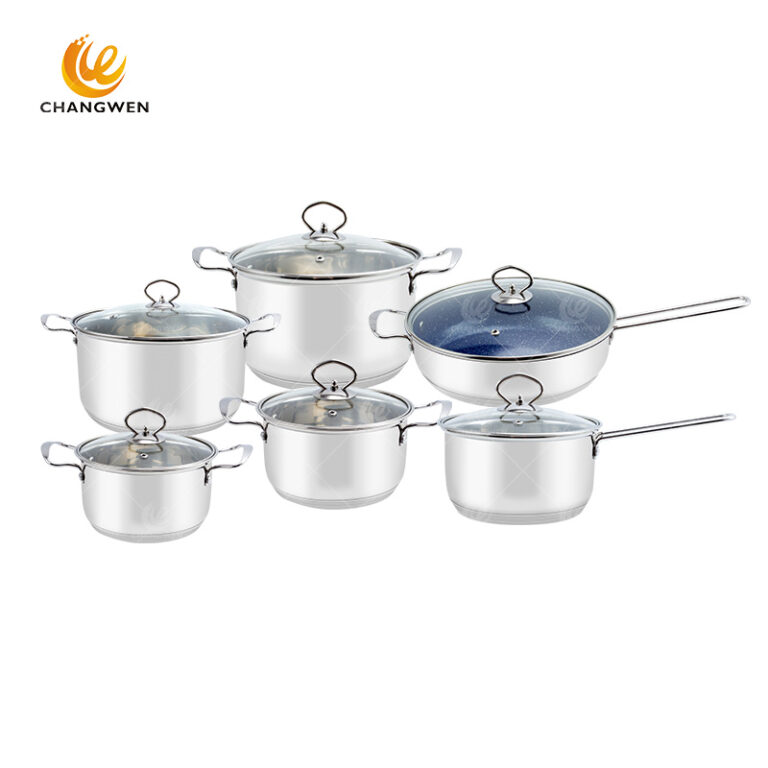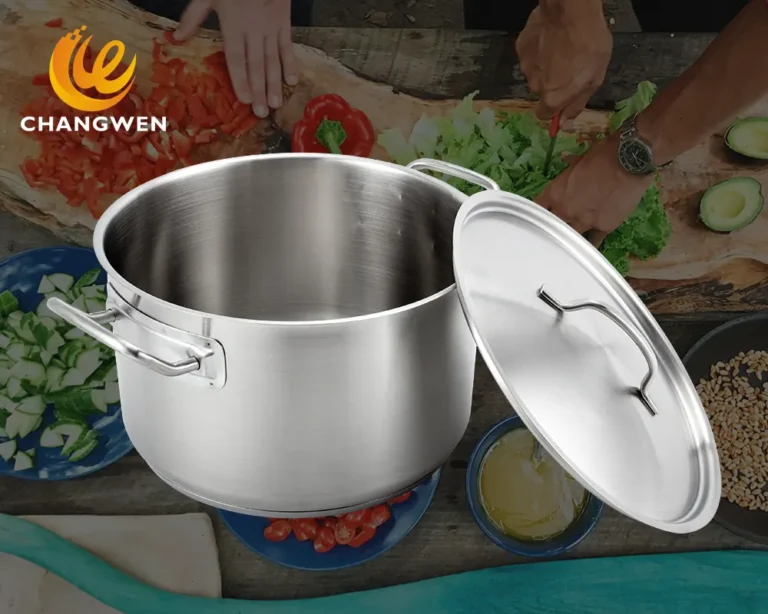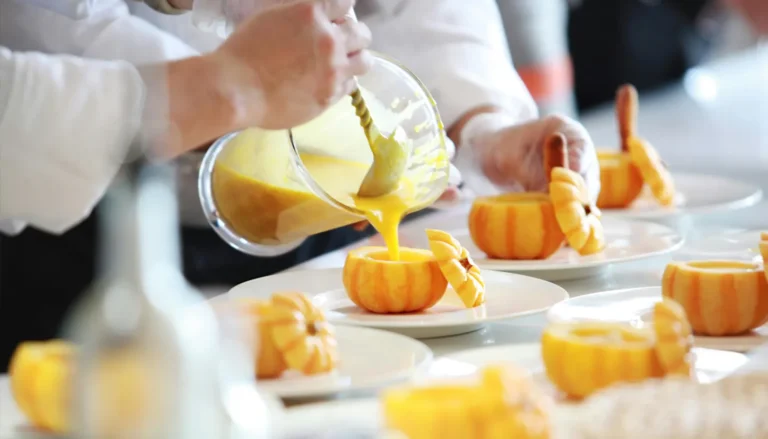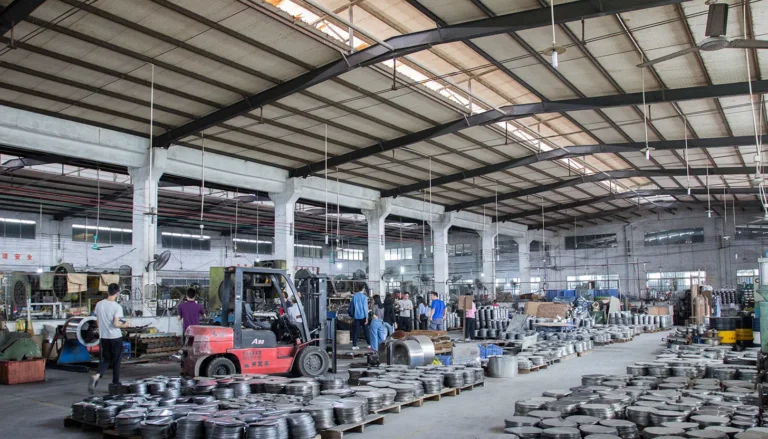Aluminum cookware has become a kitchen staple due to its excellent heat conductivity, light weight, and affordability. But have you ever wondered about the intricate process involved in manufacturing aluminum cookware? This comprehensive guide will take you through each step of the production process, from raw material extraction to the final product.
Table of Contents
Introduction to Aluminum Cookware
Aluminum cookware has earned its place in kitchens around the world due to several key advantages:
Excellent Heat Conductivity: Aluminum distributes heat evenly, reducing hotspots and cooking food more consistently.
Lightweight: Easier to handle, especially for larger pots and pans.
Cost-Effective: Aluminum is relatively inexpensive, making it a budget-friendly choice for quality cookware.
But what goes into making these indispensable kitchen tools? Let’s dive into the entire manufacturing process.
Raw Material Extraction
The journey of aluminum cookware begins with the extraction of bauxite ore, the primary raw material for aluminum production:
Mining: Bauxite ore is mined from the earth, primarily from tropical and subtropical regions.
Crushing and Milling: The bauxite is then crushed and milled into a fine powder to facilitate the extraction process.
Aluminum Refining and Smelting
Next comes the refining and smelting process to produce pure aluminum:
Bayer Process: The milled bauxite undergoes the Bayer process, where it’s mixed with sodium hydroxide to extract alumina (aluminum oxide).
Electrolysis (Hall-Héroult Process): Alumina is then subjected to electrolysis in a smelting facility, where electric current passes through the alumina to separate aluminum from oxygen.
Casting and Rolling
Once we have pure aluminum, the next step is to cast and roll it into forms suitable for cookware manufacturing:
Ingot Casting: The molten aluminum is cast into large blocks called ingots.
Hot and Cold Rolling: The ingots are then heated and flattened through a series of rollers to produce aluminum sheets or coils of the desired thickness.
Forming and Shaping
The aluminum sheets are then transformed into cookware through various forming and shaping techniques:
Stamping: Stamping presses use high pressure to cut and form aluminum sheets into shapes like pans, pots, and lids.
Spinning: For round cookware, aluminum discs are spun and shaped using a lathe.
Hydroforming: Aluminum sheets are shaped using high-pressure hydraulic fluid to achieve complex shapes without losing material properties.
Surface Treatment
To improve durability and performance, the formed aluminum cookware undergoes several surface treatments:
Polishing: The cookware is polished to remove imperfections and achieve a smooth surface.
Sandblasting: Sandblasting improves the adhesion of subsequent coatings.
Coating and Anodizing
To enhance the cookware’s functionality and appearance, various coatings are applied:
Non-Stick Coating: A layer of non-stick material, such as Teflon, is applied to prevent food from sticking and make cleanup easier.
Anodizing: Anodizing is an electrochemical process that increases aluminum’s thickness, hardness, and corrosion resistance while allowing for color finishes.
Quality Control
Ensuring the highest quality is crucial in cookware manufacturing:
Inspection: Each piece of cookware undergoes rigorous inspection for defects in shape, coating, and finishing.
Testing: Products are tested for durability, heat conductivity, and non-stick performance.
Packaging and Distribution
Once quality control is completed, the cookware is packaged and prepared for distribution:
Packaging: The cookware is carefully packed in protective materials to prevent damage during transit.
Distribution: Packaged products are then distributed to retailers or directly to consumers via various distribution channels.
Conclusion
The manufacturing of aluminum cookware is a complex process that involves multiple steps— from raw material extraction to final packaging. Each stage plays a crucial role in ensuring that the end product is of high quality, durable, and efficient in performance. Understanding this process not only enriches our appreciation for aluminum cookware but also provides insight into the remarkable journey from ore to kitchen essential.
For more detailed articles on cookware manufacturing processes, trends, and innovations, stay tuned to our blog!
Frequently Asked Questions (FAQ)
1. What are the benefits of aluminum cookware?
Answer: Aluminum cookware offers several advantages:
Excellent Heat Conductivity: Aluminum heats up quickly and evenly, reducing cooking times and ensuring consistent cooking.
Lightweight: Compared to other materials, aluminum cookware is easier to handle and transport.
Cost-Effective: Aluminum cookware is generally more affordable compared to stainless steel or copper options.
Durable: When properly treated, aluminum cookware can withstand high temperatures and regular use without warping.
2. Is aluminum cookware safe to use?
Answer: Yes, aluminum cookware is safe to use. Modern aluminum cookware often comes with a non-stick or anodized coating that prevents aluminum from leaching into food. Regular maintenance and proper cooking practices ensure the safety and longevity of your aluminum cookware.
3. How is anodized aluminum different from regular aluminum?
Answer: Anodized aluminum has undergone an electrochemical process that thickens and hardens its surface. This process makes the cookware more resistant to corrosion and wear, and also prevents aluminum from reacting with acidic or alkaline foods. Anodized aluminum cookware is typically more durable and offers enhanced non-stick properties compared to regular aluminum.
4. Can aluminum cookware be used on all types of stovetops?
Answer: Aluminum cookware can be used on most stovetops, including gas, electric, and ceramic. However, it is not suitable for induction cooktops unless it has a compatible magnetic base. Always check the manufacturer’s specifications to ensure compatibility with your stovetop.
5. How do I maintain and care for my aluminum cookware?
Answer: Proper care extends the life of your aluminum cookware:
Avoid High Heat: Use medium to low heat settings to preserve the non-stick coating and prevent warping.
Hand Wash: Although some aluminum cookware is dishwasher-safe, hand washing with mild detergent and a soft sponge is recommended to maintain the coating.
Avoid Metal Utensils: Use wooden, silicone, or plastic utensils to prevent scratching the surface.
Regular Inspection: Periodically check for any signs of damage or wear on the coating and replace cookware as necessary.
6. What is the environmental impact of aluminum cookware manufacturing?
Answer: The manufacturing process of aluminum cookware has environmental implications, primarily due to the extraction and refining of bauxite ore, which can lead to deforestation and energy consumption. However, aluminum is highly recyclable, and many manufacturers are adopting sustainable practices to reduce their environmental footprint, such as using recycled aluminum and implementing energy-efficient technologies.
7. How does non-stick coating affect the cooking experience?
Answer: Non-stick coatings on aluminum cookware provide several benefits:
Easy Cleaning: Foods do not stick to the surface, making cleaning much simpler.
Healthier Cooking: The need for excessive oil or butter is reduced, allowing for healthier meal preparation.
Enhanced Cooking Performance: Non-stick surfaces ensure even cooking and prevent burning or charring of food.
8. What are the alternatives to aluminum cookware?
Answer: There are several alternatives to aluminum cookware, each with its unique advantages:
Stainless Steel: Known for its durability and non-reactive nature, it is ideal for browning and deglazing.
Cast Iron: Offers excellent heat retention and even cooking but is heavier and requires regular seasoning.
Copper: Provides superior heat conductivity but is more expensive and requires regular polishing.
Ceramic: Non-stick and eco-friendly but may be less durable and prone to chipping.
9. Can I use aluminum cookware in the oven?
Answer: Most aluminum cookware is oven-safe, but it is essential to check the manufacturer’s guidelines. Non-stick coatings and certain handles may have temperature limits, so always ensure that your cookware is rated for the oven temperature you plan to use.
10. Why choose aluminum cookware over other materials?
Answer: Aluminum cookware is chosen for its excellent heat conductivity, lightweight nature, and cost-effectiveness. It is also versatile and suitable for a wide range of cooking tasks. Innovations in aluminum cookware, such as anodizing and non-stick coatings, have further enhanced its appeal and functionality.






